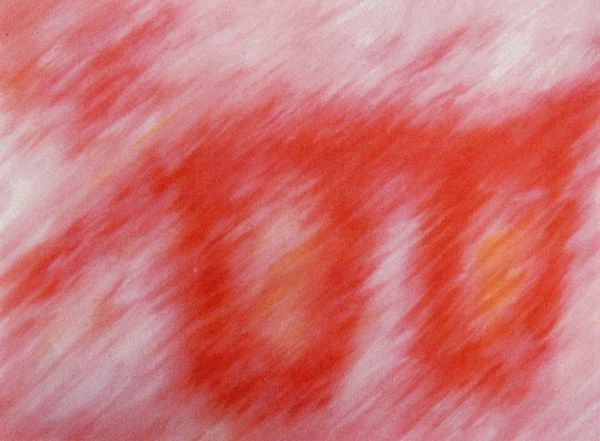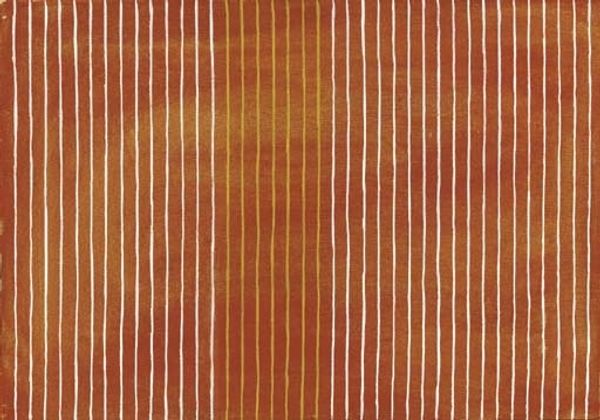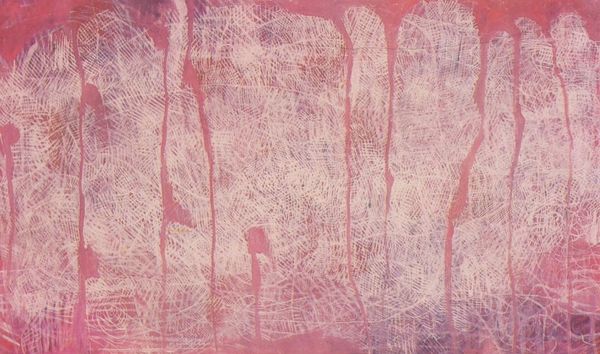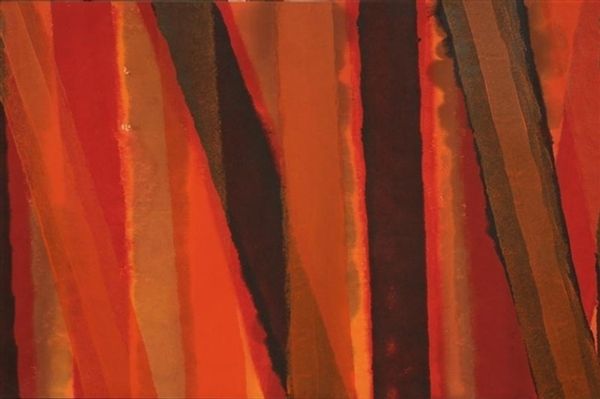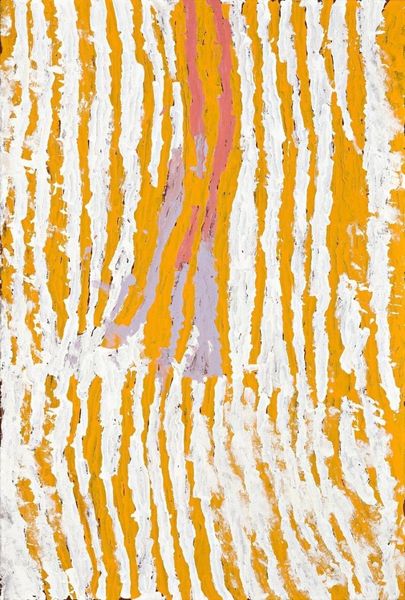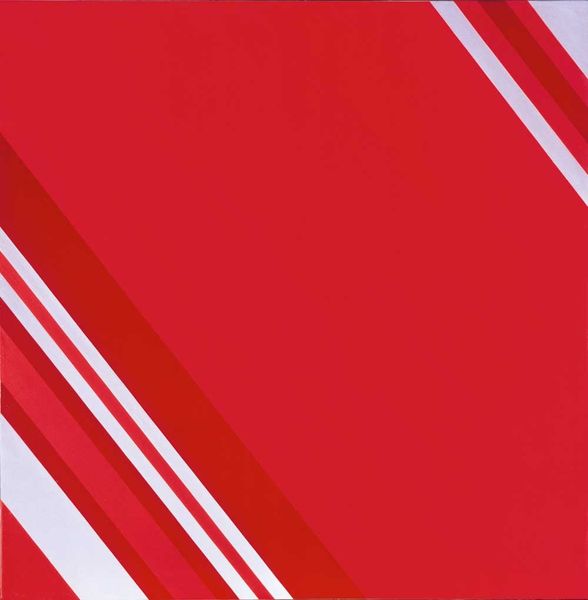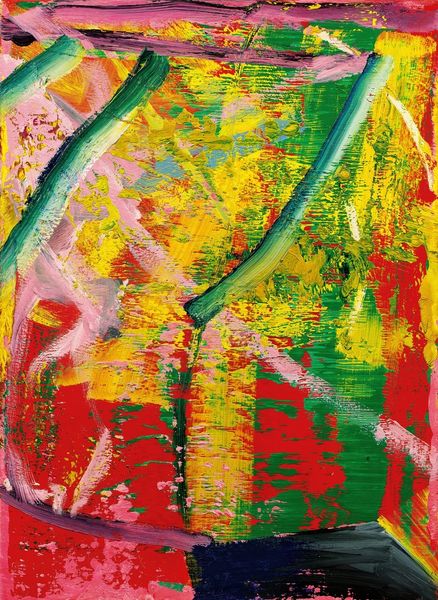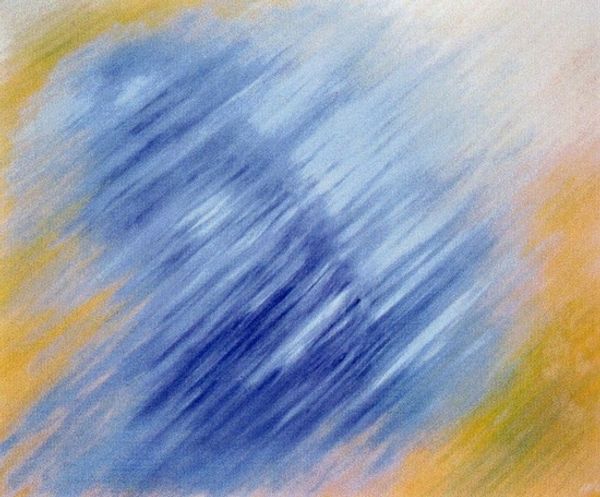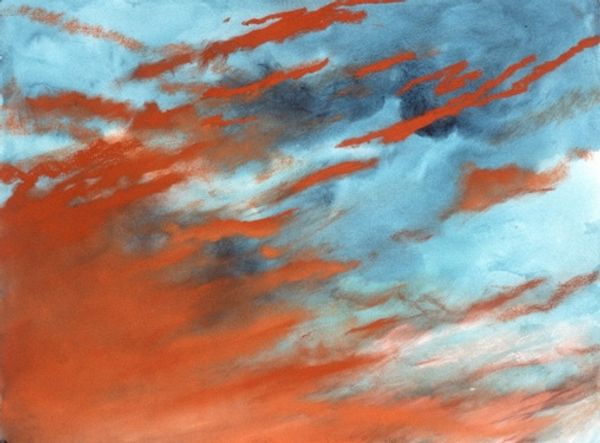
Copyright: Ion Pantilie,Fair Use
Curator: We’re looking at “Eden Garden II” crafted by Ion Pantilie in 2005. He primarily used oil paint and ink to build this striking abstract composition. Editor: Immediately, it evokes a sense of intense heat and fervent movement. The diagonally oriented brushstrokes really drive that dynamic feel. Curator: Indeed, Pantilie employs a bold palette—vibrant reds, oranges, and touches of white that create an almost visceral sensation. I’m especially interested in the surface texture. The varying thicknesses of paint application establish a rich tactile quality, creating visual rhythms across the picture plane. It seems the artist’s deliberate formal strategy invites closer scrutiny. Editor: I’m curious how the artist envisions Eden – where we know the color red bears deep semiotic weight across cultures. Red can signify love, lifeblood, but equally it suggests danger and, perhaps, original sin. Pantilie may intend to disrupt idyllic projections and to raise questions regarding power. Is Eden a truly innocent space? Curator: Certainly a valid viewpoint. From a formal perspective, notice how the direction of the brushstrokes guides the eye across the painting, while areas of untouched canvas provide breathing space, allowing our mind some relief. Consider that visual pull and release is structurally related to our capacity to see at all! Editor: But also, Pantilie, as a Romanian artist, came of age during the Ceausescu regime. The overt censorship of those years necessitated abstract modes for expressing political dissidence or simply, spiritual unrest. The title might allude not to a Biblical garden but to something deeply personal born from experiences marked by repression. Curator: An interesting angle. To shift gears again and circle back, the dynamic play between warm and cool hues provides a focal point, drawing one toward analyzing negative space as a positive shape. The formal rigor, though it appears expressive, remains anchored to solid design principles. Editor: So, on reflection, while a deep dive into aesthetic language provides one lens onto the piece, attending to Ion Pantilie’s historical and biographical details lends equal significance for comprehending not just ‘what’ is visible, but *why* the painting assumed the form it did. Curator: Precisely, our encounter with this work enriches when the analytical tools of formal assessment merge with the empathetic impulse to engage with historical circumstances.
Comments
No comments
Be the first to comment and join the conversation on the ultimate creative platform.

